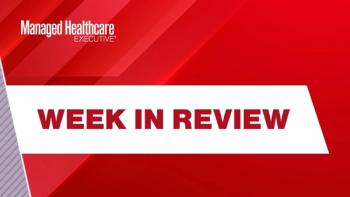
Out of Service: How a Missed Ride Can Impact Health Outcomes
Using predictive analytics to address social determinants of Health and transportation barriers.
When the healthcare industry and government entities started working in earnest to resolve challenges related to social determinants of health (SDoH)—defined by
As much as
But we also recognize that co-existing factors present multiple barriers to care, not only access to care but the equity of care: one of those is access to reliable, convenient transportation.
“Transportation barriers are often cited as barriers to healthcare access,” according to the
In addition, the same study found that when transportation barriers are eliminated, we
To break down barriers to healthcare and improve health equity, we must ensure dependable and safe transportation to healthcare services, no matter who the rider is or where they live.
A separate
If we can make a substantive impact on transportation, we have the possibility of improving patient satisfaction, lowering healthcare costs for patients and providers and improving health outcomes.
Predictive Analytics and NEMT Software
One way to get there is by using advanced non-emergency medical transportation (NEMT) software. Low-income patients
What we need is a transfer of knowledge from other industries. We can apply this transportation knowledge to healthcare, and we can use ideas from the trucking industry, for example, to help build and improve NEMT.
NEMT providers frequently face issues and obstacles caused by significant and continuous traffic on roads and highways. However, we can use various trucking industry concepts and our predictive analytics to make real-time decisions that impact patient trips positively.
Predictive analytics can help us reroute trips on the fly, make and change trips, and significantly decrease the time a patient waits for a ride. We want to mitigate the effects of traffic congestion, accidents, rush-hour traffic and more.
The rising need for mobility, especially in large urban centers, consequently
To close the ride/arrival time gap and thwart elevated congestion levels, we can use patient location and driver location data, using GPS found in smartphones or vehicles, to reroute vehicles immediately to the right place at the right time. In addition to decreasing wait times, we can improve patient satisfaction and the overall ride experience with a more responsive ride management system.
Driving Change with Analytics
By evaluating the elasticity of other quality metrics and determining overall program optimization goals, predictive analytics can be used for pre-dispatch/routing decisions to achieve other key program goals and facilitate high-level strategic investments in member health. These improvements can transform lower-level routine service tasks into automated decisions with human oversight for improved scalability and program control.
We can use predictive analytics to better understand and act on several transportation-related challenges.
- Using predictive analytics to achieve on-time arrivals for appointments can be combined with proprietary predictive models to improve quality and cost management further.
- Routing decisions identified via predictive analytics, for example, can optimize performance according to programmatic objectives by applying meaningful routing decisions before dispatching a driver.
- Leveraging historical transportation data can help predict rider no-shows improving network efficiency, cost management and programmatic interventions to enhance rider adherence to appointments. Ultimately, this improves patient health outcomes and drives favorable cost reductions for a health system.
- Forecasting complaints is critical to improving the patient transportation experience. To do so, we can select specific values as they relate to a rider's experience, allowing a view into expected ride-related criticisms that will need an automated or human intervention.
- Data from NEMT, meal delivery, medication management and remote monitoring can be fed into predictive models to identify transportation routing decisions. To the extent transportation becomes the backbone for these services, we can simultaneously model projected outcomes while developing an overall expected value of care related to the entire package of services delivered.
Predicting the Future
As more NEMT routes are digitized, and the data is collected and analyzed, it will be easier to transform the NEMT industry and provide patients with an around-the-clock, on-demand, and improved ride registration and trip experience.
The goal, whether you’re a healthcare transportation provider, a driver or a patient, is to meaningfully alter the entire NEMT model by utilizing predictive analytics to create an improved experience for everyone involved because no one wants to wait for a ride any longer than they must.
Newsletter
Get the latest industry news, event updates, and more from Managed healthcare Executive.

















































